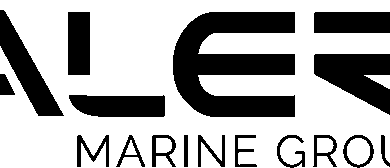2022: The Economic Year Ahead
Experts say businesses should benefit from a favorable operating environment this year as the economy continues to grow at a healthy clip.

Clearing skies with a chance of showers.
The economic forecast for 2022 promises a largely favorable operating environment for businesses of all sizes as the nation benefits from steady growth in goods and services. Tail winds include a decline in unemployment numbers, rising wages, a booming housing sector, fat corporate profits, aggressive capital investment and generally easy capital sourcing.
“We are in the midst of an early economic recovery after the body blow of COVID-19,” says Bernard Yaros Jr., assistant director and economist at Moody’s Analytics. “Though growth will decelerate in 2022 due to fading effects from business re-openings and past fiscal stimulus, the economy will remain robust.”
The numbers tell the tale. Moody’s Analytics expects Real GDP (gross domestic product) to grow at a healthy 4.3 percent in 2022. While that is a bit less aggressive than the 6 percent of the past 12 months, it remains decidedly sunnier than the 3.4 percent pandemic-fueled decline of 2020. (GDP, the total of the nation’s goods and services, is the most commonly accepted measure of economic growth. “Real” GDP adjusts for inflation.)
Profits Grow
Businesses tend to benefit from a healthy economy, and Moody’s Analytics expects corporate profits to increase by some 4 percent in 2022. While that figure might seem unremarkable in isolation, it represents a hefty advance over the difficult comparisons of 2021, when profits spiked 35 percent. Clearly, business owners are glad to bid adieu to the pandemic-battered 2020, when their profits declined 3 percent.
Headwinds, of course, are inevitable. And 2022 will have its own troubling mix: The peekaboo pandemic. Labor shortages. Crippled supply chains. China tariffs. Nascent inflation. Unsettled consumers.
Yet economists do not expect negatives to prevail.
“While the Delta variant is continuing to do some damage, we expect this wave of the pandemic to soon subside and for any future waves to be successively less disruptive,” says Yaros. “Labor and goods shortages will ease as the domestic and global economies increasingly learn how to live in a new pandemic normal.”
Furthermore, heftier earnings should help companies weather the coming year’s array of challenges.
“Corporate profit margins have been running somewhat above their five-year average of 11.1 percent,” notes Yaros. “That should provide some ability to absorb price pressures that have developed from rising commodity prices and global supply chain issues.”
Sales Recover
Business owners tend to confirm the economists’ sunny reports.
“Most of our members have seen a healthy return of revenues and are doing about 90 percent of their pre-COVID business,” says Tom Palisin, executive director of The Manufacturers’ Association, a York, Pa.-based regional employers’ group with more than 370 member companies. “Many have actually gone into hiring mode.”
With its diverse membership in fabrication, defense and machinery building, Palisin’s association is something of a proxy American industry.
“Our members are optimistic and expect current levels of demand to continue well into 2022,” says Palisin. “They’re expecting to continue to hire, as well. Our annual wage and salary survey usually projects between 400 and 500 job openings for the coming 12 months. Now, though, the number is more than a thousand. So, we’re looking at a doubling of the usual hiring activity.”
Aggressive hiring is improving the nation’s employment level, a key driver of the consumer sentiment so vital to the nation’s overall business health.
“Unemployment has been declining pretty steadily,” says Scott P. Hoyt, senior director of consumer economics for Moody’s Analytics. “Jobs are being added at a rate that prior to the pandemic would be viewed as astoundingly good.”
Unemployment is expected to be as low as 4.5 percent when 2021 figures are finally tallied, and should decline to 3.4 percent by the end of 2022, a level not far from the “full employment” conditions of the pre-pandemic economy.
Wage Hikes
Any tight labor market is likely to spark wage hikes – yet another driver of positive consumer sentiment. Today’s economy is no exception.
“We have seen a significant increase in wages over the past year – as high as 20 percent to 25 percent for lower hourly entry-level employees or machine operators,” says Palisin. Nationwide, increases are running lower, due to normalization of wages in some industries.
“In 2022, we’re looking at 2.6 percent growth in the employment cost index, compared with 2.9 percent for 2021 and 2.6 percent in 2020,” says Hoyt. (Economists consider the “employment cost index” as the best measure of actual wage rates). Hoyt adds that “any risks to the accuracy of those numbers is probably on the upside.”
Wage rates aren’t the only component of an employer’s labor cost. Toss into the mix a greater number of people employed, a greater number of job positions filled, an increased number of hours worked, and the total comes to what economists dub “wage and salary income.” And it’s clear that employers nationwide will be shelling out more of that in the coming 12 months.
“In 2022, we’re looking at about 4.6 percent growth in wage and salary income, coming off a 7 percent increase in 2021, which was up from the 1.3 percent of 2020,” says Hoyt.
All that additional income should encourage greater consumer spending, a key driver of a healthy economy. And signs are that people have saved up considerable sums of cash that are ready to be spent.
Throughout 2020 and early 2021, after-tax income rose much faster than had been anticipated prior to the pandemic. The reason was massive fiscal stimulus in terms of federal economic impact checks and expanded unemployment insurance payments. At the same time, consumer spending ran lower than anticipated. “People now have a huge amount of savings,” says Hoyt. “Furthermore, consumer credit card borrowing has been weak, leaving consumers more flexibility to borrow money going forward if they choose to.”
Construction Activity
Given healthy corporate growth, it’s little wonder business investment remains robust.
“Our members in general are expanding, building new warehouses and manufacturing facilities and buying new equipment,” says Palisin. “We are seeing a special uptick in the automation category because of the labor supply issue.”
Nationwide, the picture is the same. Moody’s Analytics expects capital investment to increase 8.2 percent for both 2021 and 2022, another welcome rebound from the 5.4 percent decline of 2020. Companies are giving a lot of attention to bolstering their intel-lectual property infrastructure.
“Investments in information processing equipment and software is well above its pre-pandemic level as businesses have boosted their IT budgets,” says Yaros. Higher energy prices have also fueled aggressive investments in mining exploration, shafts and well structures.
The economy should also benefit from more spending on commercial structures.
“We’re going to see more non-residential construction next year,” says Bill Conerly, principal of his own consulting firm in Lake Oswego, Ore. “It will be strongest probably in warehouses and light industrial, but also suburban offices. Early indicators, like the Architectural Billings Index, are looking positive.”
This will be a welcome change over recent flat activity, which Conerly attributes to the long lead times characteristic of such projects, and a scarcity of new initiatives in the early days of the pandemic.
“Early in 2020, nobody was signing papers to acquire land or do new projects,” he says. “So, what we see going on now are projects that were planned pre-pandemic or with short lead times.”
Fueling the trend: Ready money.
“For the most part, our companies are able to access funds for hard capital investments and lines of credit,” says Palisin. “Financing has loosened up since a year ago when everybody was in a high state of uncertainty.”
On the residential side, housing starts have been running about 20 percent higher than pre-pandemic levels, according to Moody’s Analytics. The prediction is for full steam ahead. “Annual growth in housing starts will remain strong because of favorable demand- side factors, namely demographics and excess savings,” says Yaros.
Increases for 2022 are expected to top 12.9 percent – very aggressive by historical standards and only lower than the previous year’s 15.3 percent increase because of temporary supply shortages.
Eager consumers are bidding up the prices of single-family homes, and a general easing of mortgage lending standards is helping grease the skids. Housing prices for 2021 are expected to jump 15.6 percent – a considerable improvement over the previous year’s 9.8 percent. As for 2022, Moody’s Analytics expects increases to decelerate to 1.4 percent, thanks to difficult year-to- year comparisons.
Scarce Workers
The generally favorable economic forecast is not without its clouds. As most employers will attest, today’s ambitious hiring initiatives are colliding with a scarcity of candidates.
“Our members are having difficulty finding enough workers, especially for entry-level jobs,” says Palisin. “The average time-to-hire has doubled from what it was prior to the pandemic. This will certainly impact our member’s ability to take on new work or provide on-time delivery.”
Nationwide, job openings recently topped a record-shattering 11 million – a huge increase over the 7 million pre-pandemic level.
“The No. 1 concern of businesses going forward will be finding qualified labor,” says Yaros. “There have never been so many open positions across every industry and government, but the need for more workers is especially acute in manufacturing, transportation,
educational services, healthcare, and leisure and hospitality.”
The reasons for the scarcity are diverse.
“There has been a significant drop-off in labor force participation as folks were forced into retirement or are staying home to deal with childcare or other dependent care issues that are more difficult to handle in the current environment,” says Hoyt. Some fear the risk of workplace infections. Others are not finding exactly the job they want. And many pandemic-shocked people are reassessing their life missions and pursuing new ventures.
A number of factors may help relieve the labor crisis in 2022. These include the end of bonus unemployment insurance, a declining effect from stimulus payments, an abatement of infections and a return to in-person schooling.
Supply Chains
The tight labor market is helping fuel another business headache: A global breakdown in the efficient distribution of goods.
“Most of the time the root cause of supply chain disruption is a lack of sufficient workers,” says Conerly. When people aren’t available to do the work, efficient production and transportation fall by the wayside. Cargo ships are piling up at ports, causing delivery delays and leading to widespread price increases for supplies.
The supply chain imbroglio has engaged a broad spectrum of industries.
“Close to 95 percent of our members are experiencing supply chain issues,” says Megan Tanel, senior vice president of the construction sector for the Association of Equipment Manufacturers (AEM). “More than half say the issues are getting worse. There are transportation bottlenecks, mate- rials and component shortages. For the vast majority of our members, these issues are both domestic and global. And they are causing huge constraints on production.”
The increased costs resulting from order backlogs and delivery delays are only exacerbated by the China tariffs. While businesses were expecting some relief from the Biden administration, so far there has been no move to change the status quo.
“Tariffs on Chinese goods will likely continue,” says Conerly. “In fact, given the friction between the U.S. and China, it’s possible we could even get additional ones.”
The double whammy of supply chain disruption and China tariffs are causing some businesses to look at alternative regional or local sources.
“Many businesses are no longer relying on any single supplier or global region for goods and services,” says John Manzella, a consultant on global business and economic trends, based in East Amherst, N.Y. “They are building more diversified and reliable supply chains. Instead of buying in scale from two very large Chinese suppliers, they might buy in smaller increments from a half-dozen suppliers located in different regions of the world. They may also utilize more long-term warehousing facilities. This strategy, which adds costs but reduces risk, will be extremely beneficial in protecting against the next pandemic, black swan, or trade war.”
Finding alternative sources, though, can be easier said than done.
“Many businesses that would like to source domestically can’t find any vendor in the United States that can match Chinese prices,” says Conerly. “And Chinese companies have improved the quality of their goods significantly.”
Adding to this litany of woes is the Chinese government’s increasingly heavy-handed control of industry, says Palisin.
“Some of our members are asking, ‘If we have a critical supplier in China, how likely is it that the government will step in and intervene in that company, which could impact us getting access to our components?’”
The Year Ahead
As businesses enter the early months of 2022, economists suggest watching a number of leading indicators for an idea of how the year will go. The first is the state of consumer confidence – a vital driver of the nation’s economy.
Given favorable wages and income trends, one might expect that consumers are feeling fairly good. In the closing months of 2021, though, the attitude of the American public was surprisingly unsettled.
“It really is difficult to get a good sense of consumer confidence in the current environment,” says Hoyt. One reason, of course, is the unclear path of the pandemic.
But another is the recent spike in fuel prices, sparking fears of inflation.
How the public reacts to the shape-shifting virus should be more apparent in the opening months of 2022. So should changes in the currency’s purchasing power.
“Inflation will be the key financial statistic to follow early in the year,” says Yaros.
Moody’s Analytics calls for the Core PCE Price Index to moderate to 2.2 percent in the fourth quarter of 2022 as the effects of past fiscal stimulus fade away. (The Core PCE Price Index excludes energy and food prices and is the Federal Reserve’s preferred measure of inflation).
Businesses should watch for any higher levels of persistent inflation that might cause the Fed to increase interest rates – a move Moody’s Analytics does not anticipate before 2023.
Yet another leading indicator will be the return-to-work trend. “More people getting back on the job would confirm a strong 2022,” says Conerly. “Are employers getting the workers they need? Are people earning more money to spend?”
Finally, a nonfinancial force may be more important than anything else.
“The damage done by the Delta variant has taught us that the pandemic is still alive and has the potential to disrupt economic activity,” says Hoyt. “Early in 2022, the leading data will be about COVID-19. What are the trends in vaccination rates? Infections? Hospitalizations? Deaths?”
Experts say favorable answers bode well for a robust year.
– Compiled by Phillip M. Perry



